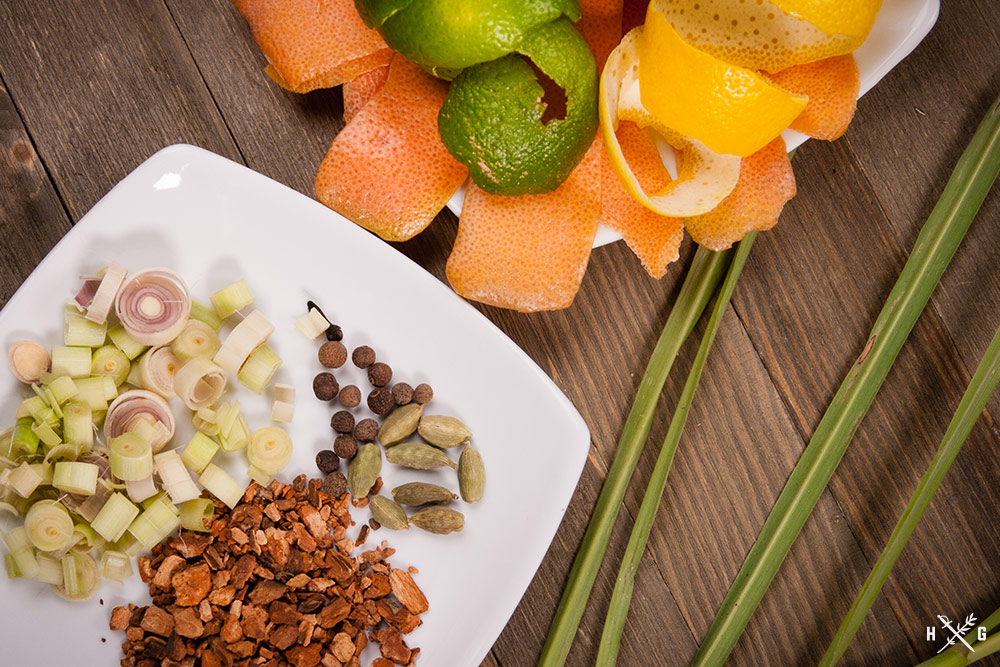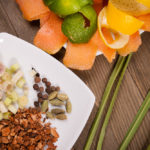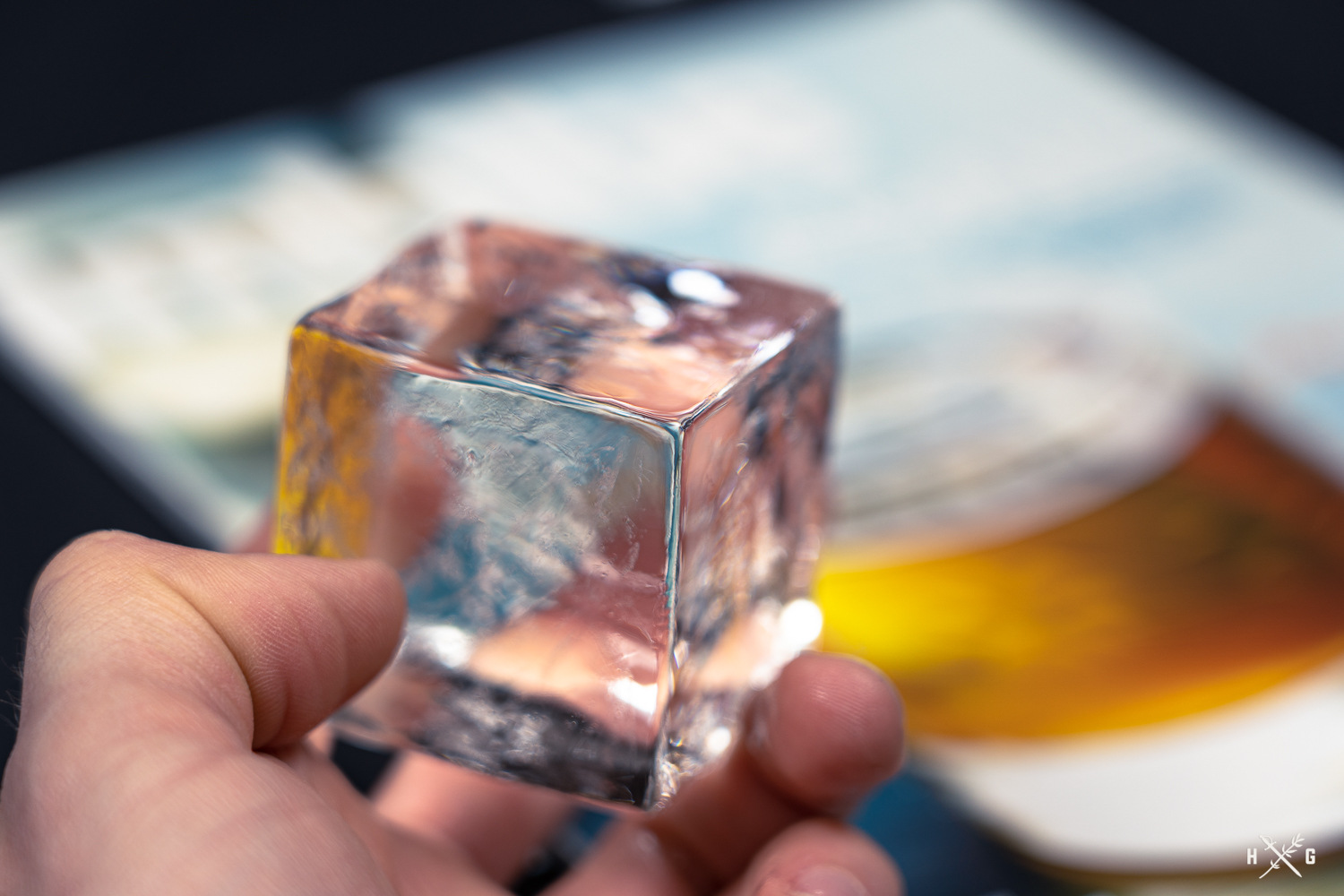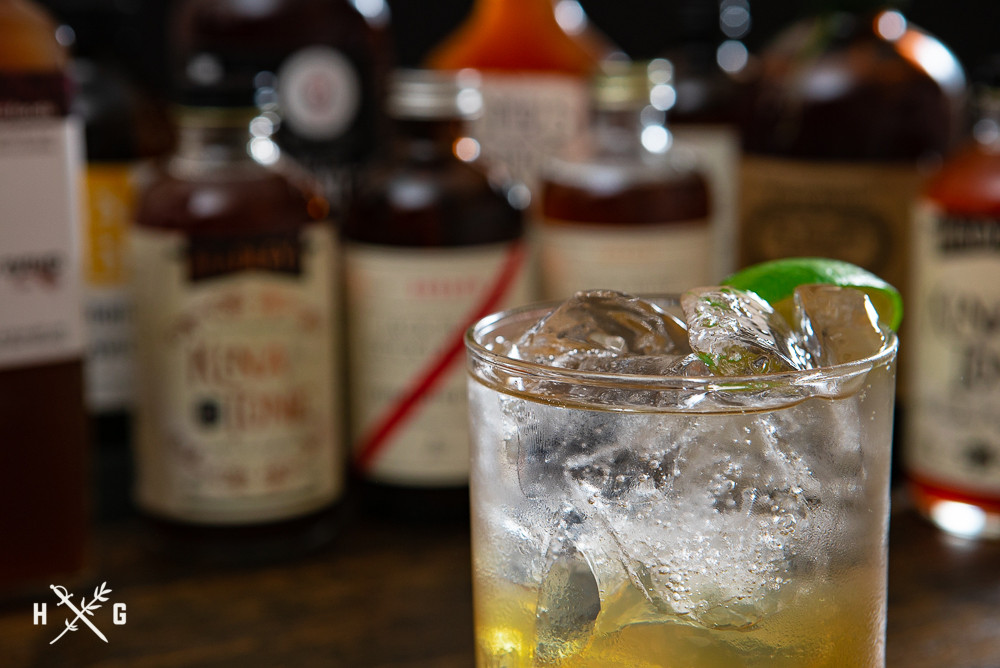Here is a recipe for homemade tonic syrup that’s perfect for making a gin and tonic. Aside from the cinchona, water, sugar, citric acid, and salt, feel free to modify this recipe to suit your tastes. This recipe provides the classic lime acidity with the added bitterness of grapefruit, and some supporting herbs and spices to give it a little backbone–I’m particularly fond of what the bay leaf adds.
To use it, simply add ¾ ounce of the syrup to 1½ ounces of gin. Add 2-3 ounces of club soda, top with ice, garnish with a lime wedge.
If you’re a gin and tonic fan, you’ll probably also enjoy this post where I ranked several popular tonic waters. In which case you’d just skip this recipe and cut to the chase. Or, if you want to do a little more mixing, I have one of the largest single reviews of tonic syrups on the internet. Check out my Ultimate Review of 19 Tonic Syrups.
Cheers!
Tonic Syrup
Ingredients
- 5 cups water
- 20 g cinchona bark chips
- 945 g sugar
- ⅓ cup citric acid
- 2 grapefruit peeled
- 4 lime peeled
- 1 lemon peeled
- 4 stalks lemongrass 140g; sliced
- 33 allspice berries
- 18 cloves
- 8 cardamom pods crushed
- ¼ teaspoon salt
- 1 bay leaf
Instructions
- Combine all ingredients except sugar and bay leaf in a saucepan and bring to a boil. Reduce heat and simmer for 30 minutes.
- Strain out solids and transfer back into saucepan.
- Add and dissolve the sugar then add bay leaf. Steep for 15 minutes.
- Remove bay leaf and bottle the syrup.
Notes





Andrew,
We are really enjoying your tonic recipe! I can’t wait to experiment on my own. Also, I was able to carbonate the entire drink as per David Arnold’s instructions in Liquid Intelligence. You might enjoy his carbonating technique as well. Thanks for the recipe.
Sincerely,
Jacob
Awesome! I need to check that out. Does it use a Soda Stream?
Yes. Pg. 311. I made two gin and tonics using the 5 1/2 oz rule and then added more carbonated water to my drink to suit my taste. Also, I squeezed my lime after carbonation as per his instructions. At the end of the day, I don’t think its as crucial to the drink as he does but I do think very cold, super carbonated water is Mandatory! I use my soda stream or unflavored Canada Dry carbonated water to get the most carbonation. Im tempted to buy a CO2 tank set up but thats getting pretty out there for a hobbyist. My wife is pretty sure I will do it at some point b/c Im crazy like that and we love carbonated water. If I figure out how to elegantly incorporate it into my countertops (chilled of coarse) as well as use it on the side to carbonate drinks then it will be a done deal. I spend a fortune on carbonated water every year even with a Soda Stream so it would pay for itself in no time. Have you ever thought about attempting the above or know someone who has? If so I would love to be pointed in that direction.
Thanks, Jacob
Haha! I’m with you on things getting a bit on the extreme side for a home hobbyist. I’m definitely that way as well. I can’t think of any home hobbyists that have done such a thing. However, I know that Hodges Bend here in Tulsa has a legit setup. Their water goes through a special filtration system to achieve a specific pH and mineral content for brewing their coffee. They also have their own carbonation system using a decently sized CO2 tank for dispensing sparkling water from a tap.
Looking forward to trying this.
I should say, on volume this seems to be more than what is required for our well appointed home bar … how long might this keep in the fridge?
Great question, Christopher.
I’d say 1-2 months is well within the safe zone. Heating it well and straining into a clean bottle are necessary. Adding a bit of vodka to the bottle syrup is a common trick as well. Camper English has some good guidelines for syrups over at Cocktail Safe. Of course if it starts to smell off or if you see floaters in the bottle, it’s a good idea to ditch the batch.
Of course, you could always use the function on the recipe card to scale down the yield from 4 cups to 1 cup. 🙂
Cheers!
Just to be sure. Your recipe asked for lemon juice, lime juice, and grapefruit juice, and pith but without the peels, correct?
Only the peels, no pith. The peels have the citrus oils, and therefore all the flavor. ?
I have to say this is very tasty! I had all the ingredients except the cinchona – which was pricey! I didn’t understand the recipe, I used the fruit instead of the peels. I made a household cleaning spray with the peels… I should have read the comments. I also used honey instead of sugar. I’m a beekeeper and I
like to grow my own herbs. So, I used fresh lemongrass, cardamom and bay leaf. It is delicious!! I never would have used the citric acid in that quality… but it worked!! I think it will keep in the fridge for a while. What could grow in that acid level?? Thank you for the recipe!
Awesome. Thanks for sharing, Kathy!
I made this tonic syrup and substituted monkfruit erythritol for the sugar as tonic has so much sugar and I need to eliminate the sugar. This makes the best tonic water ever. I have a soda stream so I make the carbonated water myself but you can also use club soda. I add a bit of ice to a glass, add one ounce tonic syrup,, a few drops of bitters, a lime wedge & fill the glass with sparkling water. I quit drinking alcohol so I also add one shot of alcohol free gin. This drink makes quitting alcohol very easy!